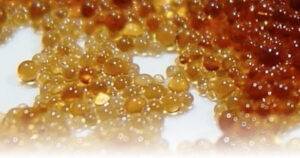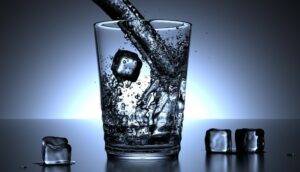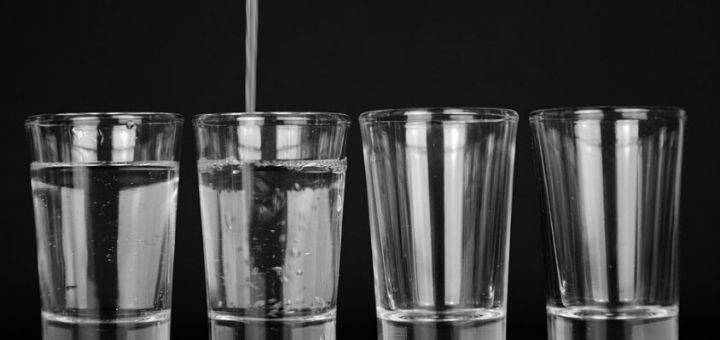The concern of discharging water softeners resin into an on-site septic system in most American households arises out of a belief that sodium salts used by water softeners during the regeneration stage, or the increased amount of water entering into the system, may be hazardous and can have a direct impact on bacterial life forms.
Although there is no scientific data available that supports this allegation, there have been many investigations done for the kinds of potential problems that may occur and the conclusion is that through much of the regeneration process, freshwater is discharged, containing no salt at all, so the total concentration of salt is very dilute.
As regards its effect on the metabolic activity of the microbial community, there is no statistically significant difference. Rather, the studies indicate that putting softened water into a septic system is beneficial.
A problem arises when there is an increased volume of water (hydraulic load) in the system. The water load could cause septic systems to fail.
Therefore it becomes necessary to discharge the water softener resin.
In this article, we are going to look at the most cost-effective and efficient ways of discharging excess water and disposing of the water softener resin.
Water Softener Resin Disposal

Water softeners use ion exchange resin beads which are made of different materials, with an extensive lifespan usually between 10 and 15 years depending on the quality of the material used in the manufacturing.
Contaminants such as chlorine, affect the lifespan of the resin. Therefore you need to install a filtration system to filter away the majority of chlorine before it reaches the softener.
The more chlorine in the water, the shorter the lifespan. The material used in resin bead manufacture is non-recyclable.
This is because recycling exhausted water softener resin materials are neither common nor practical since there are few facilities capable of processing the resin materials.
The gel is made of three elements – styrene, ethylene, and benzene which are usually regenerated using salty water from the brine tank through several processes.
The polystyrene-based gel resin undergoes polymerization so that it can be converted into an ion-exchange resin. The process is entirely safe for humans.
Cost To Replace Resin in Water Softener
Resin replacement can be an expensive process, and disposal costs can add to the investment therefore a careful cost analysis is important. To minimize the disposal cost, it’s important to consider the rate of resin generation.
Re-bedding or adding a new resin to an existing bed is appropriate only for certain circumstances such as when the effluent quality during backwash cycles is low enough to justify the cost of re-bedding or when there are shorter service runs or higher chemical dosages.
Lowering the cost of re-bedding will include some of these factors;
- Reduce the Volume of water
Reduce the amount of water flowing into the system from showers, baths, washing machines, and dishwashers to avoid excess disposal costs.
The flow rate during regeneration and the volume of water used is usually lower than an automatic washing machine.
To reduce the amount of water discharged into the system use the newer generation of metered (on-demand) water softeners to measure household water consumption.
- Minimize resin and void spaces
A void space between beads typically depends on the resin and bed type. To drive costs down minimize the size and number of containers used when transporting spent resin.
- Resin composition and chemical activity.
If you already have a water softener installed, remember that you can reduce the amount of soap use and harsh chemical cleaners substantially – by as much as 50% to 75%.
You should also use products containing low levels of phosphates.
By doing this, you will minimize the number of household cleaners that enter the waste stream.
- Resin contamination.
While most unused resins are non-hazardous, they can get contaminated if exposed to varied materials in process streams.
Exposure of resin to hazardous materials like heavy metals will require you to treat it as hazardous waste or strip the resin material before disposal.
What Are The Best Disposal Methods For Water Softener Resin Beads?
As discussed above the system degrade over time and must be replaced periodically to maintain performance.
Now, when the time reaches when you need to replace the resin beads and you are wondering about the most appropriate methods to employ whether to re-bed or to dispose of water softener resin in a method that will help preserve the environment.
Below, we have outlined some alternative effective disposal strategy approaches that are cost-effective and environmentally friendly when disposing of resin.
It’s important to check with the federal, state, and local waste management regulations on the appropriate disposal method to use.
They include;
- Burying in landfills
To avoid spilling, the resin is usually put in a separate bag. It is critical to check the Material Safety Data Sheets (MSDS) of the spent resin to verify whether the resin itself demands any particular disposal considerations.
Many studies have been performed to investigate if the exhausted resin is harmful to the environment and it seems to indicate that the discharge does not.
Most water softener resin is non-reactive with other compounds and is also stable. They also don’t interfere with drain field percolation, but actually, improve percolation in finely textured soils.
This could be caused by a higher calcium concentration found in softener regeneration discharge. When this “calcium-rich” water enters the drain field, it sometimes increases the porosity of the soil (dependent on the type of soil present), improving the percolation process.
For example gypsum, another calcium-rich material has long been used for this same purpose.
- Re-bedding
In some cases, it is possible to simply top off the resin bed instead of doing a full resin replacement. Doing so will bolster system performance without the steep costs associated with the disposal and replacement of a large volume of resin.
In some situations, topping off is not an ideal solution. For example where resin performance has suffered due to age or damage from osmotic shock, oxidant exposure, or extreme temperatures.
The Septic System and Water Softening Process
Water softeners come with two tanks. One of the tanks is a brine tank with salt, while the second contains polystyrene resin. The resin comprises plenty of beads, through which the water passes.
During the regeneration, process wastewater enters the brine tank, and the heavier solids settle at the bottom.
Water sources could potentially have very high sodium levels. While this concentration is generally insignificant at typical hardness levels, these higher sodium levels are more within the optimal range for septic system bacterial growth, which promotes bacterial development.
Then, bacteria present in the storage tank digest the solids, breaking them down into a liquid.
After this digestion is complete, relatively clear softened water with a very low amount of sodium is discharged from the primary tank into a second polystyrene holding tank or distribution box.
The polystyrene water tank will use 40 to 70 gallons of water to soften the water by eliminating the magnesium and calcium ions from the water.
This volume will depend on water pressure, pipe diameter, and softener design
The polystyrene resin replaces these ions with sodium ions. For every grain of hardness removed, approximately 8 ppm of sodium is added.
The tank also uses sodium ions to regenerate the softener resin.
A given-sized resin bed is designed with a fixed capacity to reduce the hardness before it needs to be regenerated to full capacity to provide softened water.
Water then re-enters the encompassing soil through a drainage field consisting of perforated underground piping.
The additional volume of wastewater generated is added slowly and does not cause any hydraulic overload problems.
When discharging the water load, it’s important to ensure the flow rate entering the system doesn’t adversely affect the normal settling process in the drain field.
D-I-Y Water Softener

Water safety is paramount nowadays when our limited supply of fresh water is threatened by pollution. A water purifier filter is used to kill germs, filter unwanted microorganisms, and take away sedimentary pollutants that affect your health.
Years ago, new technology for treating water was first introduced. It has since evolved into much more.
The methods of boiling the water, distilling the water, and adding chlorine to the water have gotten better over the years.
You can find more advanced methods for treating your water. But first, let’s begin with some of the cheapest means of softening water.
- Distillation
Distillation is a method of softening water that heats the water to a boiling point where it vaporizes.
The vapor is condensed and stored after it is collected. Distillation is beneficial since it takes away a wide range of pollutants.
However, a big disadvantage of distillation is that some harmful chemicals such as chlorine are vaporized and are not filtered out of the system.
- Filtering Your Water
Water filtration is also an older technology. There are advanced water filtration methods today.
It’s not necessary to use pieces of cloth or linen for water filtering because there is every shape and size of the water filter.
The problems with using a filter to clean your water are the buildup of mildew and dirt on the filter.
The filter is susceptible to pathogens and other microorganisms that like to dwell in the water. Even if you kept the filter clean, you cannot be guaranteed a clean water source that is pathogen-free.
Water filtration methods include;
1. Foam water filters
Foam water filters are one kind of water filter. They fit over the nozzle of the typical home faucet and filter the flowing water that passes through.
This filter is only good for particle chunks that are twenty-five micrometers or larger. Excessive chlorine can also be removed with this filter.
2. Cartridge water filters
Households that require mineral deposit removal can benefit from Cartridge water filtration.
The cartridge is best used when removing particles that are within twenty-five microns and fifty microns. Some filters will get rid of the nitrates and fluoride in the water. The lead is also removed during the process.
- Reverse Osmosis
Reverse osmosis is one of the newer technologies available for treating water. A reverse osmosis water softener purifier uses hydraulic pressure.
The purifier is put on the water to act against the osmotic pressure naturally occurring in the water. It will also remove the microorganisms that the ion exchange cannot dispose of.
This type of filtration produces water that is purified, containing no salts, sugars, ions, or molecules that had been dissolved up to 97%.
The purified water will however not have pleasant tastes.
The method is complicated to use but, it produces cleaner and healthier water.
- Ultraviolet Radiation Filter
An ultraviolet radiation filter is mainly used to kill germs. Ultraviolet light is produced by mercury lamps at a high setting.
The proteins of the microorganisms absorb ultraviolet radiation and are deactivated. The real drawback of ultraviolet radiation filtration is that it does not remove chemicals such as chlorine or sediments.
Water passes through an ultraviolet filter which acts as a molecular sieve.
The filter takes away dissolved molecules according to their size.
It is efficient in taking away many particles and microorganisms exceeding the rated size of the molecular sieve. This method also gives very high-quality water and uses less energy.
- Carbon Absorption Filters
A carbon absorption water purifier filter is a common way to get truly clean water.
The carbon absorption filter removes unpleasant tastes, smells, chlorine, gases, and many other chemicals. This method can also get rid of microorganisms.
Carbon absorption will not affect the hardness of water, heavy metals, or solids in the water but if it’s combined with ion exchange it becomes ideal for getting softer and cleaner water.
How to Replace Water Softener Resin
If your water softener system starts to flake, you replace the resin yourself or contact a professional to fix it. Using the services of a professional might be expensive for a problem that you can do it yourself.
Simply follow these simple steps.
- Measure the dimensions for the new resin
- Turn off the main water valve or rotate the valve to the bypass position.
- Disconnect the softener from the plumbing and electrical.
- Unscrew the valve head and put it aside.
- Clean the resin and the gravel.
- Cut the new resin into the size of the old one and insert it.
- Refill the valve head and reattach the unit to the bypass valve.
- Check for leaks by turning the valve to the service position.
- Turn on the water and check for softness.
Water Softener Problems
Water softening also has certain effects on human health and also on the environment.
Effect on the environment
On an industrial scale, the effluent flow from the regeneration process can be very significant.
Under certain conditions, such as when the effluent is discharged in admixture with domestic sewage, the calcium and magnesium salts may precipitate out as hardness scale on the inside of the discharge pipe.
This admixture can build to such an extent to block the pipe.
Effect on Humans
Below are some negative effects water softeners can have on you
- For people with heart problems high blood pressure and kidney disorders, a low-sodium diet is recommended to use a salt substitute to soften their water if they drink from the tap this is because of the increase in sodium levels (for systems releasing sodium) in the water can be significant, especially when treating very hard water.
- Potassium is a substitute that is safer for people on sodium-restricted diets although, it is also more costly than sodium.
- Some people complain of getting a slimy feel on their skin after having a bath or washing their hands in the faucet. It will feel like the soap is still on your skin and can be a bit irritating for some people.
- Softeners that use salt can corrode water heaters and make clothes look worn out if they are left in water for a long time.
It’s, therefore, a matter of weighing the benefits of using a water softener or replacing corroded appliances often.
Conclusion
Although there are benefits to softening water, there are also consequences that must be taken into account, both humans and the environment as discussed above.
For most people, the trade-off appears to be too big. Having a softener may make better financial sense in the long run.
You also get rid of hard water problems such as bad skin and hair, dirty-looking dishes and glasses, or showers that don’t work.
As long as one is aware that it does directly affect the quality of the water and consequently the minerals it contains.
A softener purifier can provide you and your family with a cleaner solution. Also, soft water allows for a cleaner wash as well as more moisturized skin after a shower.
- 30 Cozy Outdoor Kitchen Ideas You Can Try in Any Backyard - July 14, 2025
- 27 Cozy Dark Bedroom Inspiration Ideas for Warm and Relaxing - July 13, 2025
- Which Robot Lawn Mower Is Right for You? A Comparison of 6 Common Types - July 12, 2025

